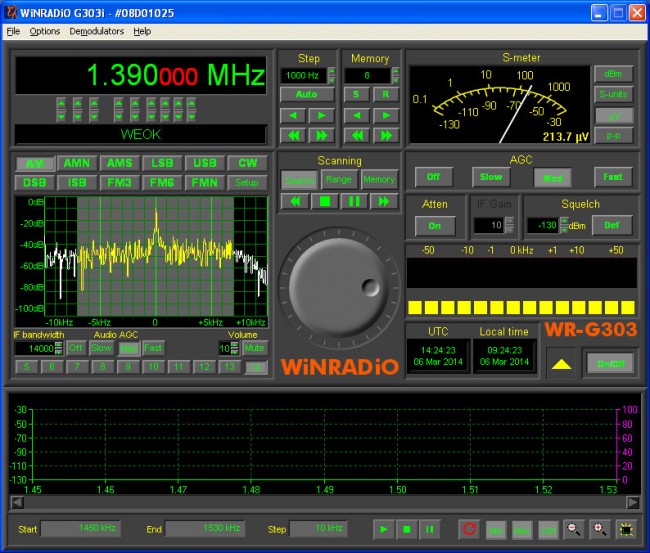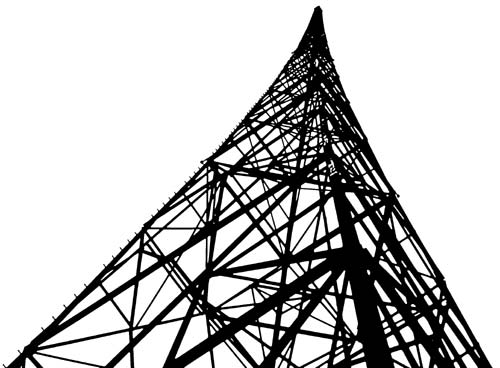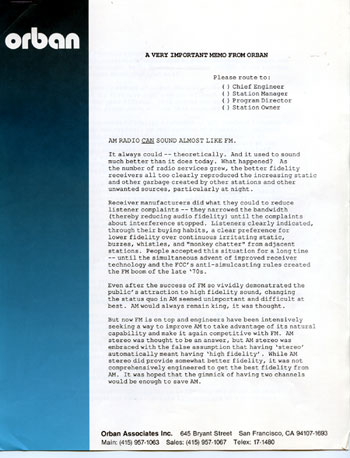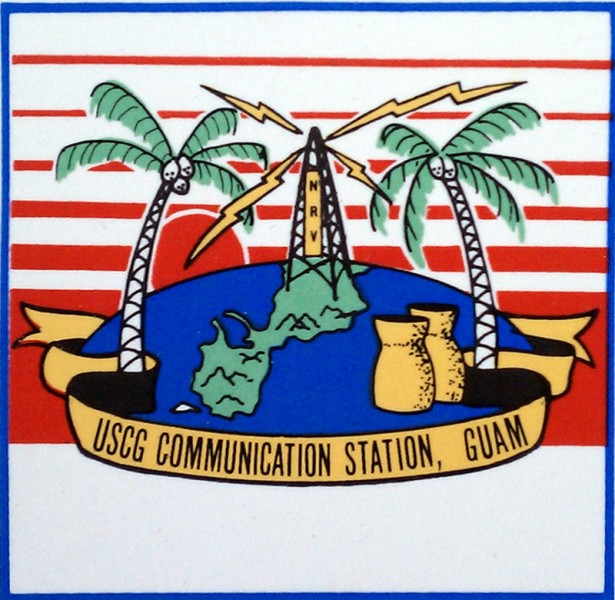The technical problems with AM broadcasting can be broken down into three broad categories:
- Interference from other AM stations
- Interference from unintentional radiators (AKA electrical noise)
- Poor receivers
Much of the poor fidelity issues with AM broadcast audio come from the narrow IF bandwidth of the typical AM receiver. Older AM receivers had much wider IF bandwidths, sometimes as much as 15 KHz +/- carrier. As the AM band was overfilled with stations starting in the late 1940s, this became a big problem. The tube-type front ends with great sensitivity but not very much selectivity was unable to cope with adjacent channel interference, leading to what was known as “monkey chatter.” This type of interference can be technically described as the higher audio frequency peaks from adjacent channel stations being demodulated. Those hearing this type of interference found it very annoying and rightly so. Thus, receiver manufacturers were deluged with complaints about the poor quality of their units. The solution was simple; narrow the bandwidth until the “monkey chatter” disappeared. This new de facto standard IF bandwidth turned out to be +/- 3 KHz carrier.
It does not take a rocket scientist to see that 3 KHz audio is slightly better than telephone quality. This was the beginning of the perceived AM low fidelity problem. In the meantime, FM broadcasting, after years of lagging behind in spite of its superior audio, made great strides into mainstream acceptance.
NRSC-1 was supposed to reduce this type of interference by limiting AM broadcasting stations’ audio bandwidth to 10 KHz. The idea was to attempt to keep the modulation index somewhat within the allotted channel. This standard was mandated by the FCC in 1989, after which receiver manufacturers were to change their design to allow for broader IF bandwidths, thus improving AM fidelity. There was even an AMAX standard adopted by some receiver manufacturers. Unfortunately, by this time, the majority of AM stations were transitioning from music to talk radio. The new standards were too little much too late.
A quick scan with a quality AM receiver shows that many stations are transmitting high-quality audio, which, with a properly adjusted IF bandwidth can sound remarkably good:

This is a screenshot from an SDR (Software Defined Radio) showing WEOK, Poughkeepsie, NY broadcasting the True Oldies Channel. The signal strength is slightly low, but this is a rural area and the noise floor is also low. I limited the bandwidth to +/- 7.5 KHz carrier because of the pre-emphasis used on most AM stations makes the high-end sound strident. Looking at the spectral display, there is more audio available beyond what I am listening to. This brings me to this; AM fidelity is not inherently inferior, it can sound quite good. There is no reason why AM receiver manufacturers cannot improve their products to include some advanced features;
- Variable IF bandwidth based on signal strength
- Variable user selected IF bandwidth
- Sharp selectivity – adjacent channel rejection
- Selectable sideband demodulation (carrier plus upper or carrier plus lower sideband)
While this will never sound as good as FM stereo, it still can sound pretty good, especially with older music recorded before say 1975 or so.
Manufacturers would have to have some impetus to include these features in their chipsets, such as multiple requests by listeners who are looking for better AM quality, which leads us back to programming…
The other issues with AM electrical noise reception and interference from other radio stations are surmountable, so long as there is a reason to. This, leads us back to… programming.





Preach it! –But I doubt receiver makers are listening. The NRSC pre-emphasis/bandwidth limits came in during the very end of my radio years and it was heartbreaking. A local 5 kW AM station could sound almost as good at as a local 50 kW FM. Even once we’d gone to Motoral AM stereo, on a good radio (there were a very few — I believe sSony had a nice one), it held up well against FM. We had a big AM and a big FM with similar equipment line-ups and slightly overlapping playlists, so it was possible to do a decent A/B.
At the time, GM still made car radios in a nearby city and they had two schools of thought for AM stereo — the “high-fidelity” crowd and the “narrow bandwidth/low cost” bunch. The latter prevailed. The handwriting was on the wall at that point; if AM was going to be low-fi in Chevys and Cadillacs, the game was over.
AM can sound great. (Purdue’s WBAA, playing classical on 920 can be wonderful; use a TRF or non-standard IF to beat the 2xIF beat.) Nobody cares. 🙁
I remember getting my first Sony AM Stereo radio from the ops manager of the AM that I would eventually end up engineering. Listening to this little 1 kilowatt AM in Kahn ISB stereo was simply amazing! Back in the mid 1980’s the audio was fantastic on both the Sony’s as well as right off the Belar monitor. From what I remember it seemed the radio manufacturers were slow on the uptake to adopt NRSC compatible radios. This likely didn’t help the surviving AMs sticking with a music-based format. Talk formats didn’t sound quite as shrill as music did.
Growing up I had a 1940’s vintage E.H. Scott communications receiver with variable bandwidth and that was my first introduction to high fidelity AM radio. I think the return of full fidelity analog AM has little chance of happening if iBiquity has their way.
From back in the analog 1970’s I fondly remember trying to filter out whatever it was that Harry Abraham was playing on WHAM from the pulsing monkey chatter of WOWO and WWVA. Todays mostly talk radio AM band has much quieter monkeys!
Your SDR is very interesting. Could you describe it just a little bit?
It is a pretty big leap to say that noise from unintentional radiators can be reduced. The FCC has never shown any inclination to do so, and the political environment discourages it. Even if they clamped down hard on it today, it would take at least a decade to see the results. Does AM have that long?
My point is, it can sound much better than it does today, with a little effort. Will anyone make the effort, not unless there is a reason to.
Lee – The SDR used here is a WinRadio G303i, which is their lower feature model. Truth be told, there are many available on eBay and other places. Basically, it consists of a PCI card with an RF front end and demodulator. The computer software makes all the decisions about how to demodulate and process the audio. It makes the receiver almost infinitely configurable. There are also several USB versions based on the Realtek RTL2832 and E4000 tuner. If one is even slightly savvy, a reasonable SDR for LF-HF (120KHz through 54 MHz) can be had for $75.00. A VHF/UHF version 28-2200 MHz can be had for $20.00 or so.
Lowell – Technically speaking, electrical noise can be mitigated, however, you are correct; the FCC does not have the wherewithal to accomplish this.
The audio started out with a 15 KHz LPF in the Moseley STL as the bandwidth limiting on the old GE. I remember when we were forced to put in the NRSC filters there were immediate complaints from the on air staff.
Early adopter of C-QUAM. Ran that up until they bought a 9200 that was mono. Mostly talk by then.
They put HD on the station. Ran with the 5.5 KHz audio for all of one day until I discovered a “wide band audio” setting on the Deathstar exciter. That got rid of the inner HD carriers and set the audio bandwidth to 7.5 KHz. Made the HD not so robust and had a few more artifacts. The Deathstar finally failed and they’re back to NRSC bandwidth.
A lot of stations were mandated by corporate hq to run 5 kHz, IBOC or not. The audio processors do a good job limiting to that bandwidth, but when the IBOC exciter also does it, you’ve got an even worse-sounding signal. One station I tend to sounded much better once the Deathstar died its final time with the dreaded “purple screen of death” and refusal to boot up, even with a new software installation.
Paul, thanks for the SDR info. I’ll have to look into getting one of those things.
As usual Paul you are right on. So many listeners gave up on AM long ago not just because of the “lo-fi” of the typical modern AM receiver, but the horrendous noise present in everyday home and offices from all the cheap Chinese switching power supplies in everything from flat screen TV’s to battery chargers. Even a quality built wideband AM receiver cannot contend with 35db of noise. Remember when the FCC OET actually gave a damn about incidental radiators? It’s no wonder even the big clear channel AM’s in my town (WSB) have begun simulcasting on their big stick FM’s to survive.
I am also amazed at how many “higher end” consumer radios lack in the AM audio department. I own two Bose Wave radios, one is an AWR-1B1 from 2000, the other a Wave Radio II from 2006. Both actually have really good sensitvity and selectivity on AM, but don’t get about 5KHz, which is a bummer. Thought about modifying them but finding service info on Bose products is nearly impossible. I do own a circa 2000 Yamaha RX-V595 that has an EXCELLENT front end on AM with wideband audio, and listening to a local Motown station (WGUN 1010) is awesome. I am sure I am in the minority for appreciating their on air signal, it really does sound great.
Most of their listeners probably listen online to some low bitrate compressed stream, they will gladly trade rich, warm natural sound (albeit capped at 10KHz from NRSC-1) for compressed, artifiact filled digital- so long as it doesn’t have static. Oh well. It’s truly a shame to see AM radio treated like a neglected puppy in a shelter.
AM can be excellent listening. But IBOC is not the answer. Wide bandwidth and quality tuner is the answer with a good antenna along with a good music format. Nothing like good local AM music on a classic Fisher 800-C with the AM set on Broad. With that tuner, AM is really only limited to what the station is broadcasting.
Unfortunately, AM stations on adjacent channels and using 9.5 kHz NRSC-1 produce more mutual interference than when using no pre-emphasis, even in narrow-band AM receivers: http://postimg.org/image/4kfe5lmg9/
There are many areas of the US where stations on adjacent frequencies have overlapping useful groundwave contours, where this added interference would be present. Here is a clip showing some of these in the upper Midwest: http://s20.postimg.org/4hhqdjenh/1240k_Hz_and_Adjacents.jpg
Before NRSC many stations were running a lot more preemphasis, with no 9.5 cutoff. I remember how muffled some AM’s sounded after the filtering was installed.
NRSC did reduce interference among those stations, but absolutely increases it as compared to running no preemphasis at all.
It had become a vicious circle with manufacturers narrowing receiver bandwidth, then stations boosting HF to compensate. Which brought on another round of IF narrowing, and even steeper preemphasis….
Problem is, crap programming in 3kHz mono or 24/96 7.1 channel surround sound is still… crap programming.
Until that’s fixed, anything else on the AM band is just shoveling sand against the tide.
Where the hell did I put that loop antenna for my receiver?!?
We at WIBG1020/101.3FM are glad that the firestorm over AM quality is being
questioned. WE had a lengthy discussion with FCC Commissioner Ajit Pairegarding this. This planned destruction ofthe AM band is a long time in coming. Started with the FM broadcasters as early as 1967 when they petitioned Congress to require auto manufacturers to install FM radio in vehicles. Summarily at about the same time, radio manufacturers used “lower priced” parts in AM radios, and
low and behold, audio quality went from 10kHz to 3kHz. What a coincidence! This issue was premeditated and now, we’ve got the gimmick gang, HD which has contributed more to the death noise on the AM band, followed by lazy public utilities failing to service their pole wires and transformers.. making for even more noise. C’mon AM broadcasters.. get moving and appeal to the FCC and for corporate banksters at NAB to reflect on what they have wrought. Time for a quick change and we’ve got a real broadcasters friend in Ajit Pai. Join us on the NAAMB, the National Association of AM Broadcasters to press the political flesh. AM radio can be fixed quickly and inexpensively. But can the corporate nomenclatura cope with it?
I’m really pleased to see another person say “variable IF bandwidth based on signal strength”. I’ve modified a half dozen of my radios to do that, and it works magically. I’ve done it with just a few cents worth of parts. I add positive feedback to LC tuned IF strips and then align the strip with a weak signal. The positive feedback causes a detuning effect so if you optimize it for full narrow, when the feedback goes away (i.e., on strong signals) the strip is wider than it would’ve been under normal circumstances. So the local 10KW AM sounds like near-FM, but the radio tunes like a narrow communications receiver where there are weak signals. Note that on fading signals such as on MW and HF bands, the BW of the receiver seamlessly and continuously changes with the signal strength. The BW changes because the AGC changes the gain of the IF strip while the amount of feedback is constant. One of my best ideas ever, and it works great. But nobody does it!
Hopefully you have applied for a patent of your design 🙂 Seriously, Perhaps nobody does it because they are not as smart as you are.
Rick Brancadora posted “Started with the FM broadcasters as early as 1967 when they petitioned Congress to require auto manufacturers to install FM radio in vehicles. Summarily at about the same time, radio manufacturers used “lower priced” parts in AM radios, and
low and behold, audio quality went from 10kHz to 3kHz. What a coincidence!”
1) Congress nor the FCC NEVER REQUIRED FM radios in vehicles. The only MANDATED changes the FCC ever required was UHF tuners in TVs back in the late 50/early 60 AND the DTV mandate on TV transmitters in 2009 (well, analog LPs still on have until 2015 to go DTV)
2) The AM radios of 60s and into the 70s still had MUCH wider audio/IF than today’s AMs..My 1977 Olds Omega SX AM/FM radio sounded great on AM music stations…and my Sony FM/AM stereo XRA-33 had switchable narrow/wide filter..so it worked on both stereo and mono stations…Your comments are incorrect, I’m afraid as the facts do not back up your statements.
I’ve become such a big believer in SDR’s that I’ve begun selling off all of my tube-type, classic receiver collection. I use the RFspace SDR-14 (no longer made) which I bought several years ago, and wish to pick up their SDR-IQ. They’re worth every penny. I also have one of the RTL-SDR USB dongles that is not top shelf, but still gives surprising performance. For software I generally use HD-SDR or SpectraVue.
Verdadero –
Care to specify what your circuit is? I get the gist of what you’re describing, but I’m a visual learner so I’d love to see the circuit, component value ranges, etc… described in such a way that they could be sketched out on paper. I’ve got a few old AM sets I’d love to add such a circuit to (you know, before analog AM gets two to the head).
This site is filled with rec. modes and home brew radio stuff
http://www.bobsamerica.com/swl.html
Bob D.
Sorry, I’m a little late to this post. Whatever happened to Motorola’s Symphony chipset? As I understand it, this chipset would have resolved many of the AM receiver issues. The chipset converted analog to digital and then processed the digital audio. It supposedly removed much of the noise, expanded the frequency response, and dealt with co-channel issues well. It was reported that the chipset could pull in noisy distance stations and clean up that audio. And best of all, the stations didn’t need to do anything because the chipset received analog signals. In essence it was digital broadcasting but on the receiver side.
is c-quam fm possible?
In addition to the good comments regarding receivers above I would make the following comments regarding the design of radios with digital tuning:
(1) that digitally-tuned radios have an option to allow manual fine tuning in 1kHz steps on AM. It’s often the case that AM reception suffers interference that is on one edge of the signal only, and detuning perhaps by 2kHz in the opposite direction can significantly improve listenability on typical radios.
(2)That digitally-tuned radios are designed not to mute during manual tuning (unfortunately most radios implement muting with manual tuning, making it difficult to find/discover stations across the band by manual tuning which are below the Scan tuning signal strength threshold).
I live in an area where there are only a few AM stations, spaced far apart. My DDX-512 Kenwood car stereo already had the best FM tuner I had heard (maintains stereo well without blending), but AM was muffled. After putting in a wider ceramic filter in the AM side (it is WIDE, like 50 khz), I have been surprised to hear how good AM can sound. I’ve thought about looking for a narrower filter because it is overkill, but haven’t done it yet.
On some receivers the muffled AM audio is primarily due to low pass filtering of the audio after detection, rather than the IF filters. I found this on a Sony stereo Radio/CD/Cassette system (in Europe) the PMC-205L dating from around 1998/1999. AM audio (it has both Medium Wave and Long Wave) was so muffled as to make it very unpleasant to listen to, especially in the presence of other sounds such as when working in a kitchen. The same IC (TA2008AN) demodulates both FM and AM, however in AM mode a ‘AM hi-cut’ (or treble cut) LPF is switched in on it’s Detector output (Pin 17). I disabled this by cutting a leg of capacitor C33 and AM audio is now listenable on it!. (C33 is a 0.022uF Ceramic cylindrical capacitor with colour codes that looks like a resistor) I had found the service manual available to download at http://elektrotanya.com/sony_pmc-205l.pdf/download.html
No complaints about its FM performance on the other hand, good sensitivity and not prone to overload from nearby FM transmitter(s) either.
Any claimed advantage of ‘AM HI-CUT’ is far outweighed by the poor sound quality.
My first radio experience started in 1966 in Rochester. The owner of our station was “thrifty” in that he would buy sapphire styli for the GE VRII turntable cartridges. They would last about 10 minutes before getting gritty. I would buy diamond styli at a local discount store, and bring them in every day for my shift. The difference was awesome. The station existed (with usually bad sounding turntables) until the owner died in 1979. I had moved on to higher quality stations. In 1973 I bought my first new car, a Toyota Corolla. It came with an AM/FM tuner (made by “Ten”). I took it back to the dealer twice because the AM section just didn’t sound right. We tried several other vehicles on the lot with AM/FM receivers-same effect. Fast forward a year and the purchase of another Corolla. AM only radio. Difference was amazing. The AM only unit sounded great. Fast forward (we do a lot of that in my house) to 1989. I bought an Infiniti sedan. AM/FM/AM Stereo radio. Automatically switched to wideband AM when the stereo signal clicked in. Where I lived at the time we had no stations playing music on AM in Stereo so I couldn’t get good performance out of the Infiniti tuner. But my father-in-law and I had to go to Cleveland (from Cincinnati) and on the way through Columbus his Oldsmobile picked up WCOL (1230 AM) in Stereo. Wideband. It was scary how good it sounded. On a 1kw signal. Radio needs help in general, but AM needs it even moreso. If there IS an AM broadcasters association, it’s a very well kept secret. Let’s see if we can fix the entire medium of radio. Local, live and engaging. Three words that can save it all. Then the quality can follow.
I have just commissioned a 50kW AM transmitter near Johannesburg South Africa on 702 kHz. We are a privately owned commercial music station broadcasting music from late 1950s until the mid 80s and also contemporary music in the style of the 70s. One of the challenges we face is to try and achieve the best sound to compete with the FM stations. Our transmitter is an Ampegon M2W. I initially started off using an Orban 9100B but could not get away from the “tunnel” sound no matter how I adjusted the HF and Bass EQ. The transmitter is flat from 20 Hz to 10kHz and the antenna system is designed and adjusted for DRM so phase rotation is perfect with perfect AM symmetry. No EQ was necessary. Square waves are Square.
The primary STL is a Ku band satellite feed at 256 kb/s. I have changed the program feed now. I have put the 9100B in Proof mode and now process at the studio end using a PC based Orban 1100 and Gregg preset as the starting point. The input and outputs of the processor are AES and the uplink encoder is also AES so no problem of A/D conversion with associated quantising noise and overshoot. Ihave boosted the LF by 9dB at 90Hz. I have added maximum HF boost permitted by the processor and increased the brightness level slightly.
Listening on a 10 year old Denon receiver and on various older radios with wider bandwidth I get a very good sound quality. Older car radios of the manual tuning kind tend to sound good too. But many of the newer integrated car radios sound awful. Either no HF response – sounds like the receiver has a 2.5kHz LPF in the audio or else I get really horrid HF distortion (screachyness) sound on music with lots of natural density: ie. lots of strings or brass and “wall of sound” rock from the 60s and 70s.
Any ideas?
Chris Turner
Founder and Principle Engineer
LM Radio
Over the years I’ve noticed that high-fidelity manufacturers seem to include superb FM tuners in their stereo receivers, but skimp on the AM tuners. They probably believe that most hi-fi listeners are more likely to listen to FM rather than AM. But those who want to listen to programming on AM, such as news, talk, sports, foreign-language programming, or the occasional eclectic music program, are pretty much out of luck … unless they choose to listen on a portable radio. I’ve noticed, and I’m sure others have also, that the AM tuner in a $25.00 portable radio usually sounds and performs far better than the AM tuner in a $300.00 high-fidelity receiver. This just doesn’t make sense to me. Why can’t high-fidelity manufacturers pay some attention to the quality in their AM tuners as well? I’m sure it wouldn’t cost that much and it would add value to their receivers. How about it!?
I find that a common cause of distortion in typical superheterodyne AM receivers is under sized AGC filter capacitors which allow low frequency audio back into the IF stage, causing intermodulation of the higher audio frequencies.
Software Dependent Radios can have really good AM sound.